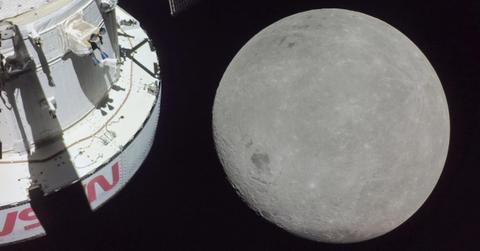Scrolling Through Outer Space? Why NASA Plans to Establish Internet Service on Moon

NASA is working with private companies to establish internet connectivity on the moon.
Dec. 18 2023, Published 1:02 p.m. ET
Could TikTok videos and Instagram may soon be available in outer space?
According to NASA, the agency is preparing for another lunar mission and laying the groundwork for an intricate internet service.
The initiative, called LunaNet, is not all about lunar selfies; instead, it aspires to create a network on the moon that mirrors the communication infrastructure on our home planet.
As both human and robotic space exploration grows, the need for a robust communication network will become essential for navigation, timekeeping, health monitoring of astronauts and tracking lunar conditions. NASA envisions future missions involving the transmission of high-data-rate videos from the moon, providing immersive experiences for viewers on Earth.
The LunaNet project expands upon the Artemis 1 mission, a crucial step in returning American astronauts to the moon for the first time since 1972. Ambitious plans for the moon's future include a human habitat, a space station and even a lunar web service.
Snopes, a fact-checking website, recently deemed the claim that NASA was installing internet on the moon "mostly true."
While acknowledging NASA's efforts to bring a form of celestial internet to the moon, Snopes clarified that it wouldn't be identical to the internet we currently enjoy on Earth.
Nokia, the Finnish telecommunications company, was chosen by NASA to bring LTE and 4G service to the moon to facilitate communication between the lunar lander and rover. Nokia announced they plan to deploy a network capable of operating "under the most extreme conditions imaginable."
The technology will utilize various networking protocols to transmit information between astronauts in space and on Earth.
Dave Israel, a principal investigator at NASA Goddard Space Flight Center, emphasized the transformative impact such a network could have on lunar exploration and future missions, extending connectivity not only to Mars but also beyond, Fast Company reported.
Never miss a story — sign up for the Front Page Detectives newsletter. Be on the scene the moment news breaks.
Despite the potential benefits, bridging the data gap between Earth and the moon poses numerous challenges, particularly from the lunar south pole and far side, which lack direct lines of sight with Earth. To address this, NASA plans to launch lunar satellites, relay spacecraft and ground stations acting as lunar cell towers to achieve connectivity.
The quest for a lunar internet service also carries significant long-term geopolitical implications. The entity or country that shapes the lunar internet infrastructure stands to wield considerable influence, dictating collaboration among network providers and assigning lunar web addresses, Fast Company reported.
Become a Front Page Detective
Sign up to receive breaking
Front Page Detectives
news and exclusive investigations.
